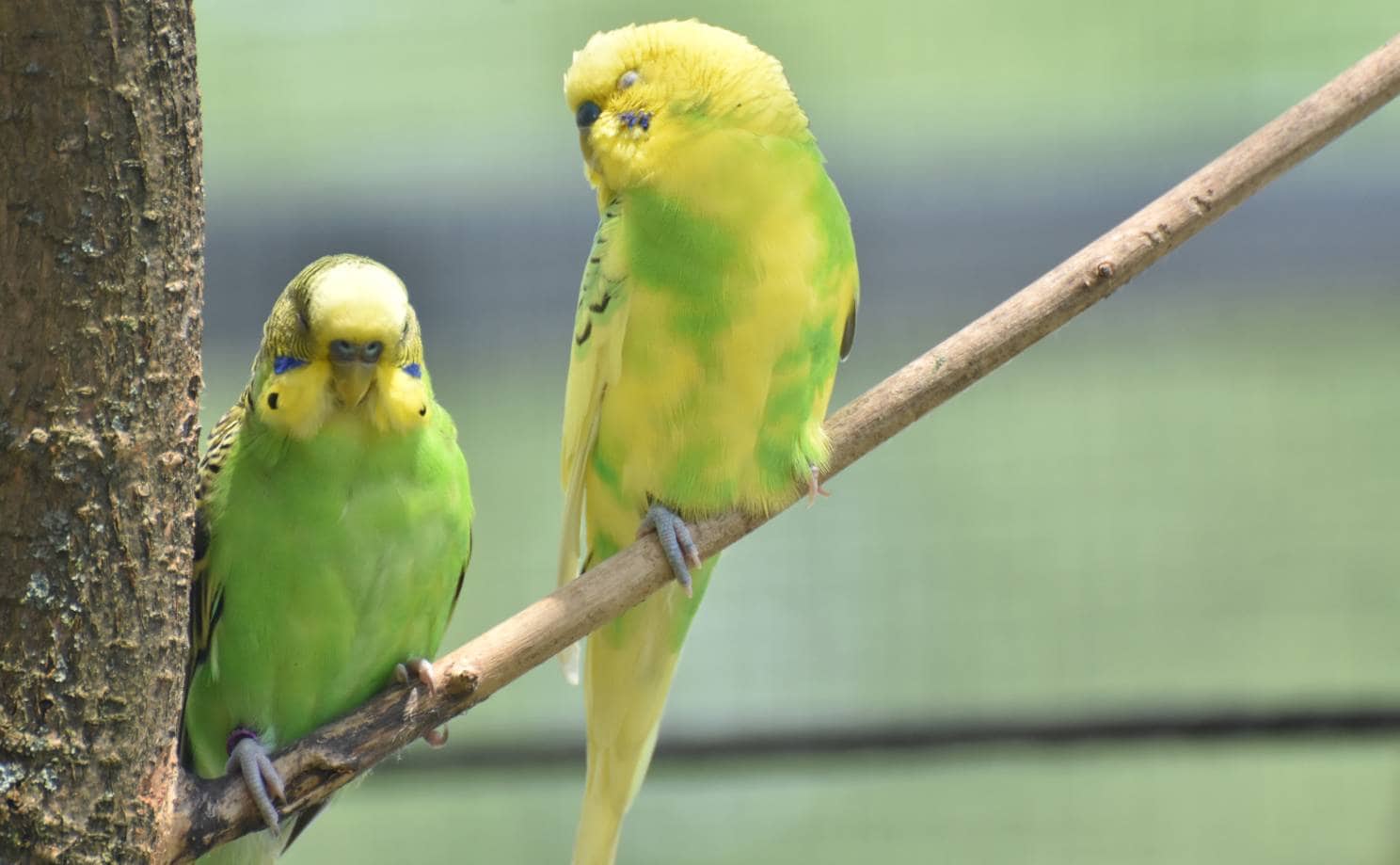
Click to Skip Ahead
Cockatiels are some of the most popular pet birds in the world, and it is not hard to see why. They are social, affectionate, and borderline goofy. They are also talented whistlers. And male cockatiels have a reputation for serenading their favorite persons, mates, and even their own reflections.
These birds are busybodies and will play and fly around their cages or rooms while taking the time to perch on your shoulder to remind you how much they love you.
Blue cockatiels are simply cockatiels that have a blue color. Nonetheless, they are rare, as the vast majority of cockatiels are gray-the blue color results from a gene mutation.
Cockatiels are easy birds to keep, making them ideal for almost anyone. However, to provide your Blue cockatiel with a long and healthy life, you must know a few things.
Species Overview
| Common Names: | Blue Cockatiel |
| Scientific Name: | Nymphicus hollandicus |
| Adult Size: | 12-13 inches long |
| Life Expectancy: | 15-25 years |
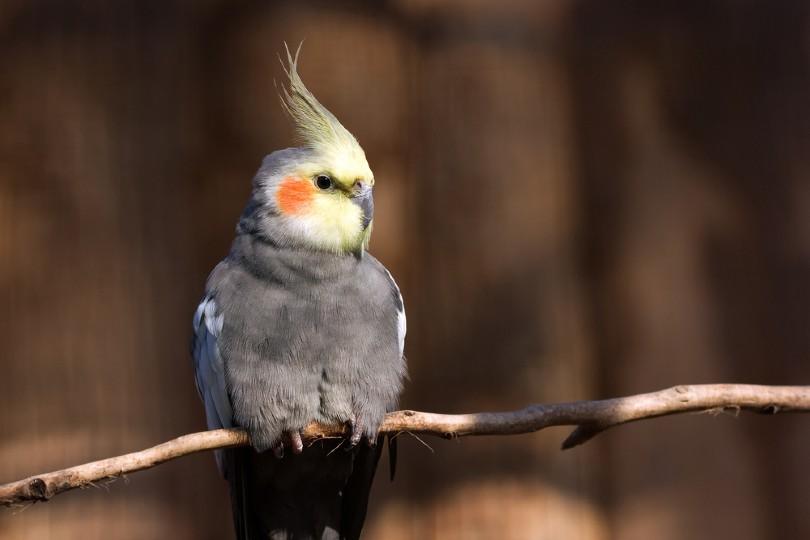
Origin and History
Blue cockatiels are native to Northern Australia, including the Outback, as they prefer living in arid regions. Many believe that living in such open environments is the reason for their much quieter vocals as compared to the screeching parrots that originate from dense rain forests.
In their native habitat, wild cockatiels typically forage for food on the ground. Additionally, they breed rather easily, which is why they are so readily available, as they retain that habit even in captivity.
People who share their habitat refer to them as Weiros or Quarrions. This bird is the tiniest member of the cockatoo family and was first discovered in the late 1700s. However, it would not be until the 1900s that the cockatiel would become a popular house pet.
Currently, however, the Australian government has banned the trapping and exportation of cockatiels.
Temperament
One of the most talked-about traits of Blue cockatiels is their wonderful personality. It is true; cockatiels are some of the sweetest pet cockatoos you will ever come across. They are gentle, friendly, and receptive to petting.
However, even though the Blue cockatiel does not mind a little bit of petting, it can get anxious when you start cuddling it. Being frightful birds, cockatiels like knowing that they have an escape route if they need one. Therefore, resist your urge to cuddle and simply hold them gently.
Fortunately, you can always tell the mood of a Blue cockatiel by the position of the feathers on its crest. If they are standing straight, it means that the bird is curious or excited. If they are lying flat on its head, it means that the bird is fearful or under stress. If the bird is hissing, you can be sure that that is the case.
In such cases, try eliminating anything that your pet might be perceiving to be a threat. Relaxed crest feathers, in addition to fluffed cheek feathers, are often indicative of a relaxed cockatiel.
There is also a difference in temperament between male and female cockatiels, with males being more vocal. Female cockatiels are typically silent, only communicating when they need to, such as when asking for food or treats.
Nevertheless, all cockatiels require a significant amount of social interaction to find fulfillment. This is why you are advised to adopt these birds in pairs. If you are rarely at home, do not adopt a lone bird, as it is likely to become stressed out due to a lack of company.
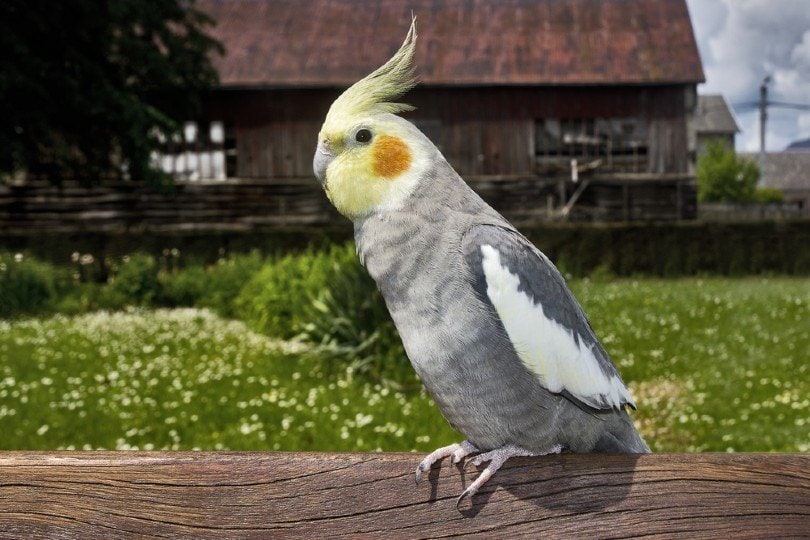
Speech & Vocalizations
Learning the meaning of the variety of sounds that a Blue cockatiel makes will allow you to know when your bird is happy, stressed, or sick.
Cockatiels are fond of whistling. They do this when they are happy or when looking to charm you or their mate. Therefore, it is a good sign if your bird is constantly whistling. Whistling is the Blue cockatiel’s preferred method of singing.
However, these birds also scream, chirp, and hiss, with each vocalization having a meaning. Blue cockatiels scream when they are under duress. Screaming, therefore, is not a good sign and you should investigate what is stressing the bird as soon as it does that.
Chirping, on the other hand, means that your cockatiel is content and happy. They often do this when they are feeling sociable. You will find that most of the time that your cockatiel chirps is when you have been away for a while and are looking to spend some time with them.
Cockatiels hiss when they take a defensive stance, meaning that they are aiming to intimidate another bird, pet, or person. Hissing is usually followed by biting. Therefore, be wary when your Blue cockatiel makes this sound.
As mentioned, male cockatiels are more vocal than females. Additionally, they are also better at mimicking whistles and speech. Nonetheless, both can mimic a wide variety of sounds in your home, including phones and alarm clocks.
These birds, however, are not as loud as other parrots.
Blue Cockatiel Colors and Markings
Cockatiels today are bred specifically to create a broader range of colors. In the wild, these birds are typically only gray or silver. Nonetheless, color mutations do occur from time to time, thanks to genetics and the amount of melanin or lipochromes a bird has.
High amounts of melanin usually result in colors such as blue and brown. A higher amount of lipochromes, on the other hand, causes colors such as red and yellow.
A Blue cockatiel, therefore, has high amounts of melanin, which is what caused the color mutation. It is important to note that the color of a cockatiel does not affect its temperament, intelligence, or health.
If you’re curious about the many color mutations and types of cockatiels, we can’t recommend the book The Ultimate Guide to Cockatiels enough!
This beautiful book (available on Amazon) features a detailed, illustrated guide to cockatiel color mutations, plus helpful tips on housing, feeding, breeding, and generally taking excellent care of your birds.
Caring for the Blue Cockatiel
While the lifespan of a Blue cockatiel is usually said to be between 15 and 25 years, these birds have been known to live for as many as 30 years. For your cockatiel to live that long, however, you must provide it with the right type of care.
Fortunately, these birds are not that difficult to care for. For starters, ensure that your pet has company. This could be either yourself or another cockatiel. As mentioned, being social creatures, these birds suffer when they are alone. If you do not get them as a pair, therefore, be ready to spend significant amounts of time every day interacting with them.
Next, make sure that you have a large cage to allow your bird enough space to play, as they are incredibly active. An ideal cockatiel cage should have a square base with each side measuring at least 20 inches while being at least 26 inches tall. If the cage comes with a large front door, the better. This is because it allows the bird an easier entry into the cage.
As mentioned, wild cockatiels forage the ground for food. Pet cockatiels retain the habit, foraging the cage’s bottom whenever they get the chance. Therefore, consider covering the cage’s floor with sawdust and sprinkle millet or crumbled treats for your pet to find.
Blue cockatiels can be messy. You know they are dirty when you find powdery dust on them. Spray or bathe them at least once a week to keep them clean. Make sure to take care of their cage as well, cleaning it at least twice a week. To make your work easier, consider getting a cage with a removable bottom.
You will also need to clip their nails and wings twice every year. Unless you are an expert, we recommend delegating this task to an avian veterinarian, as they will do it properly.
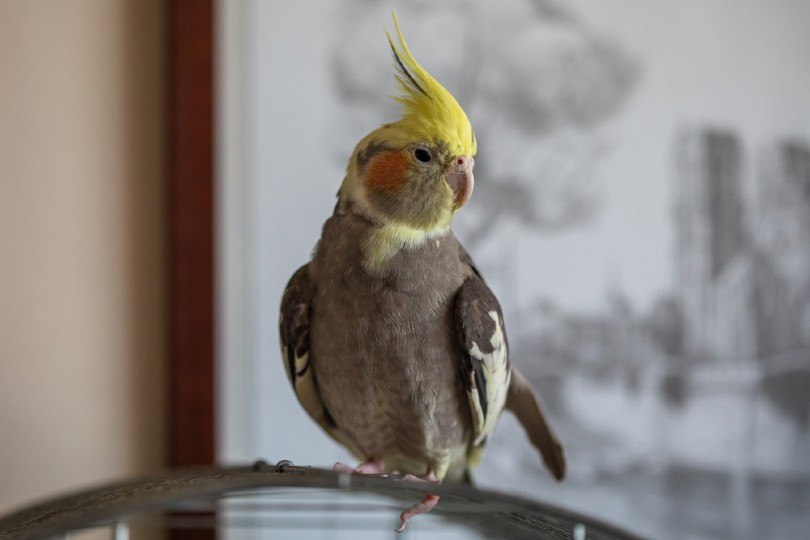
Common Health Problems
Blue cockatiels are pretty robust birds, which is why they live for so long. However, they can be susceptible to some health disorders while in captivity, chief among them nutritional deficiency.
This results from a diet consisting primarily of seeds. However, they need minerals and vitamins from vegetables and fruits, as well as pellets for a balanced diet.
These birds are also susceptible to fatty liver disease. It is usually caused by consuming a diet that is rich in carbohydrates while not getting enough exercise.
Like other birds, cockatiels are also susceptible to a host of respiratory diseases. Therefore, make sure to alert your avian vet in case the bird begins to display respiratory symptoms such as coughing, sneezing, and wheezing.
All the above are symptoms of a sick bird. Therefore, take action as soon as you notice them.
Diet and Nutrition
As mentioned, variety is key when it comes to providing a Blue cockatiel with a balanced diet. Seeds, therefore, should not be the end all be all due to their high-fat content. They should not comprise more than 30% of the cockatiel’s diet.
Consider feeding them pellets, as they contain all the nutrients the bird requires. To ensure variety, give your bird a mixture of seeds and pellets every morning, in addition to fresh fruits and vegetables.
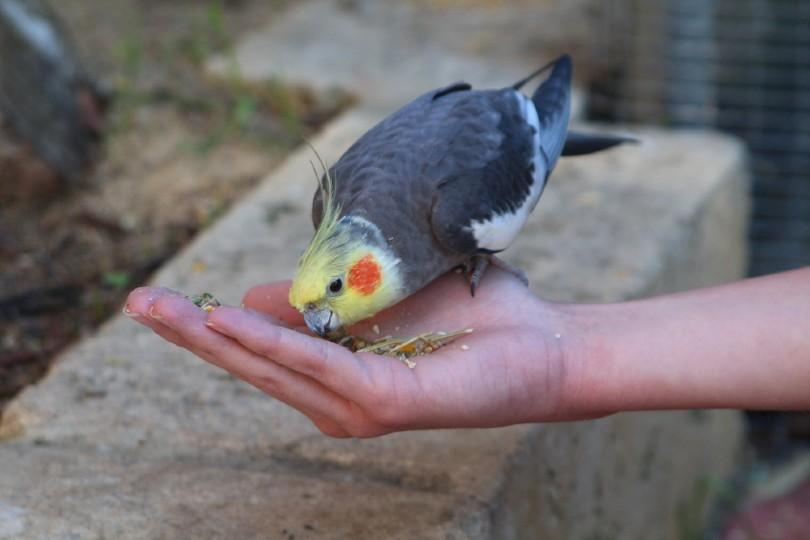
Exercise
Blue cockatiels require lots of mental and physical stimulation for a long and happy life. Therefore, ensure that the bird has adequate space in its cage to move around, as well as a room where it can fly about. However, make sure that the room does not have objects that could hurt the bird, such as fans. Additionally, close all the windows to prevent the bird from escaping.
Where to Adopt or Buy a Blue Cockatiel
You can get a Blue cockatiel from a pet store or avian breeder. These birds typically go for anywhere between $100 and $300. Make sure that the bird is healthy before buying it by looking out for signs of illness.
Ideally, the bird should have a bright blue color, in addition to being active and alert. Avoid inactive cockatiels, as they are likely sick.
You can also consider adopting an adult Blue cockatiel from a rescue center. But you are unlikely to find Blue cockatiels there due to how rare these birds are.
Conclusion
Blue cockatiels make wonderful pets. They are attentive, affectionate, and charming. Once you win them over, they will serenade you every chance they get. Additionally, they are easy to care for, making them ideal for beginners. The best part? They can live for over 25 years, meaning that you will essentially be acquiring a lifetime companion.
Featured Image Credit: Bildagentur Zoonar GmbH, Shutterstock







